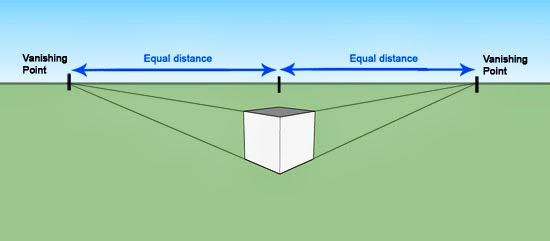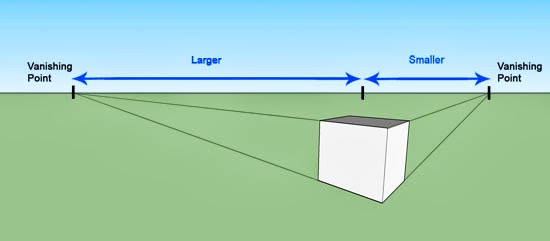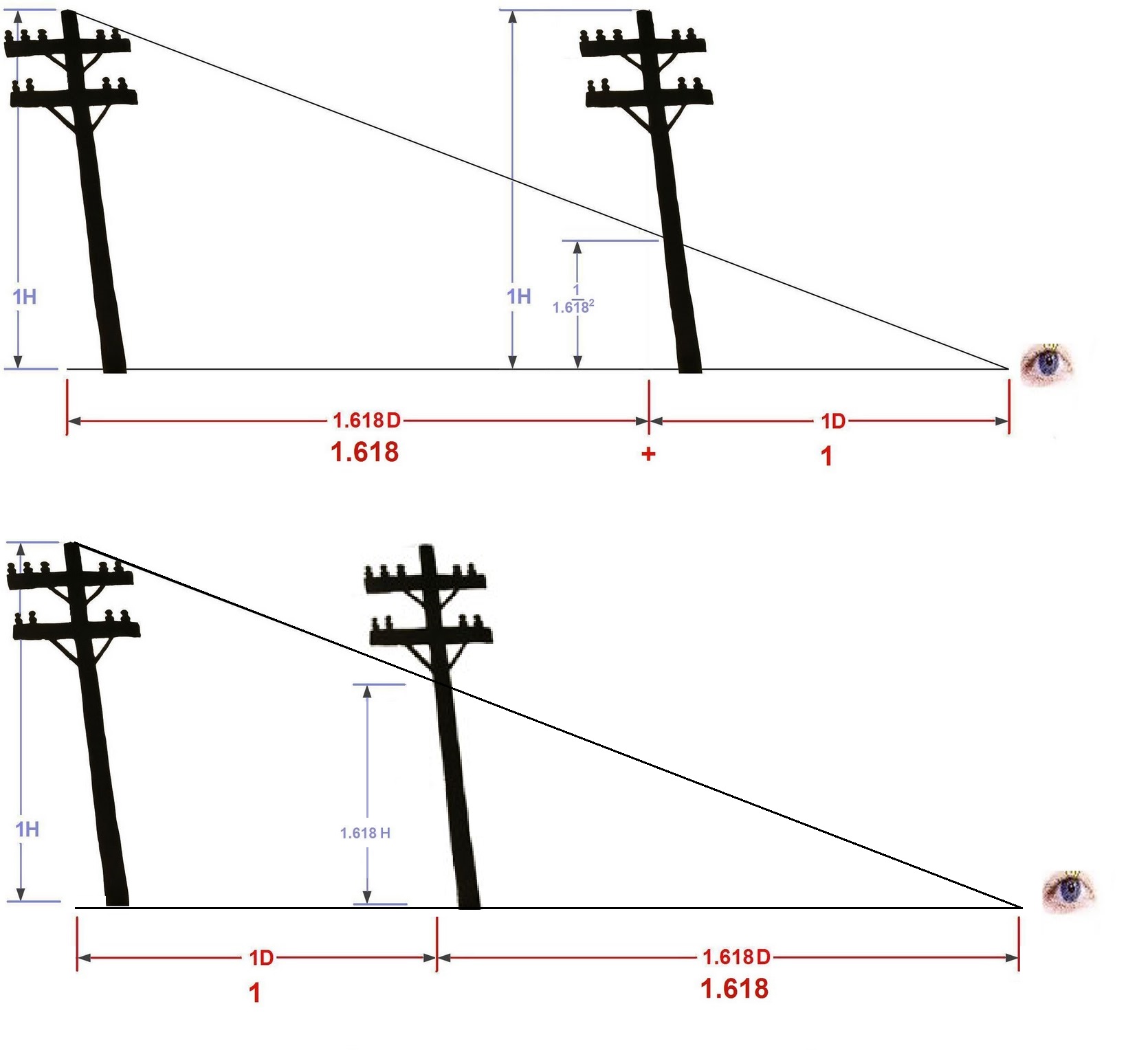| The location of vanishing points on a horizon line can be precisely determined with mathematics. It depends on the viewer’s distance to the object. An object viewed up close will have very tight vanishing points while an object being viewed from far away will have vanishing points spread apart. |
Locate vanishing points Different positions Golden proportion |


Locate Vanishing Points
Let’s take a symmetrical cube with either side foreshortening to a vanishing point. Let’s diagram what the scene looks like from the side, the viewer looking directly at the front corner of the cube:

The distance from the center of the cube to the front corner is the length of the side of the cube squared, times two, square root, and divided by two.
If the viewer stands twice this distance away from the cube, the back edge of the cube will appear to be exactly half the height of the front. The side corners of the cube will appear to be two-thirds the height of the front.

So now we know the height each of the cube’s sides in perspective. Let’s look at the perspective view of the scene. We pull out the two cube side corners (D2/3 tall). The back corner (D/2) is directly behind the front corner. Connect the tops of these lines to form the cube’s sides, and then bring those lines all the way to the horizon line. They converge at your perspective points. This is what a cube looks like from a distance of the square root of a side of the cube squared, times two:

Any object that is this distance from the viewer will use these vanishing point. In other words, any object of any size will vanish toward these vanishing points at this distance from the viewer, if positioned symmetrically.
If the viewer walks backward and doubles his distance from the object, the back corner becomes 2D/3 tall in perspective. The two cube sides become 8D/10 tall. A quick way to draw this is to take the back vanishing line from your previous cube and make that your new front vanishing line.

Do this again. Double this new distance from the viewer to the object. Take the vanishing line from the cube and make that your new front vanishing point. The back corner becomes 8D/10 tall in perspective and the two cube sides become 8D/9 tall.
Double this new distance again and the back corner becomes 8D/9 tall and the two sides become about 15D/16 tall. Double this new distance and the back corner becomes 15D/16 and the two sides 32D/33. Do it again and the back corner becomes about 32D/33 and the two sides about 63D/64.
By comparing the size of an object with the viewer’s distance to the object you can thus easily find its symmetrical vanishing points by considering it as a cube.
Moving Vanishing Points by Position of Object
If the object twists around, this shifts the perspective points along the horizon line.


The distance the perspective point shifts is exponential. If the perspective point shifts away from the object’s center it will shift an exponentially larger distance. If it shifts toward the center it will shift an exponentially smaller distance.
The back and side corners of the cube change as these perspective points shift. If the corner twists toward the viewer it gets larger and if it twists away from the viewer it gets smaller. The amount the corner changes is a sin function. Take sin of the angle the object twists to find how much the corner changes in size between the original height of the cube and back cube height in perspective.
Using the Golden Mean to relate scale
Rather than starting out with a distance away from the object equal to its height, the artist can use the golden ratio as a starting point for distances. If the object uses the golden mean in its distances from the viewer, its perspective will have a golden mean proportion to the back corner.

This relates the scale of the object to the distance from the object in a way that clarifies the scene for the viewer.
© Benjamin Blankenbehler 2013
